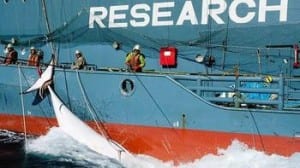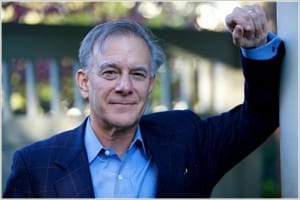GEORGE W. BUSH and his administration justified the war on Iraq with a series of colonial fantasies.
They claimed the U.S. had to topple Saddam Hussein to prevent his regime from developing weapons of mass destruction (WMD) and using them against the U.S. or selling them to al-Qaeda. They promised the war would emancipate the Iraqi people from dictatorship and establish a democracy that would be a model for the rest of the Middle East.
But the U.S. war and occupation accomplished nothing of the sort. Instead, it laid waste to a whole country. By 2006, just three years into the occupation, the British medical journal The Lancet estimated that the war was responsible for the deaths of over 650,000 Iraqis. The United Nations High Commission on Refugees reports that 1.7 million Iraqis were displaced within the country and another 2 million Iraqis fled, becoming refugees in the surrounding region.
People in the U.S. also paid a heavy price for the war. Close to 4,500 American soldiers died and over 32,000 were wounded. Nobel Prize-winning economist Joseph Stieglitz estimates that the war will cost $3 trillion when all is said and done. That enormous price tag helped trigger the government deficit crisis that has led politicians to enact deep cuts in social programs and mass layoffs of government employees.
– – – – – – – – – – – – – – – –
Propaganda and Reality
To justify its disastrous war, the U.S. government did what Howard Zinn taught us all capitalist governments do: it lied. How else can a state of, by and for the 1 Percent convince the rest of us to go along with policies that only benefit them?
First and foremost, Bush and Co. manipulated the tragedy of September 11, 2001, when al-Qaeda operatives flew highjacked planes into the World Trade Center and Pentagon. They whipped up patriotic support for the invasion and occupation of Afghanistan. Suddenly, Bush’s approval ratings, which had hovered around 50 percent or less in the wake of his theft of the 2000 presidential election, soared to near 90 percent.
Flush with newfound strength, the Bush White House launched a campaign of lies, distortion and disinformation to justify the invasion of Iraq. The administration claimed it had evidence that Saddam Hussein possessed both the technology and capacity to build chemical and nuclear WMDs, had links with al-Qaeda and was preparing for attacks on the U.S.
The administration trotted out a set of completely unreliable witnesses like conspiracy nut Laurie Mylroie, who claimed without credible evidence that Iraq was behind the 1993 World Trade Center bombing, the 9/11 attacks and the anthrax postal attacks that followed September 11. They also rolled out Iraqi expatriates like convicted embezzler and State Department favorite Ahmed Chalabi, as well as CIA asset Ayad Alawi.
Based on these paid informants, the CIA gave Bush the “intelligence” he needed to prove that Saddam Hussein’s regime was a threat. In his book Fiasco: The American Military Intervention in Iraq, journalist Thomas Ricks of the Washington Post argues that the CIA’s National Intelligence Estimate (NIE) presented “opinion as fact. As a political document that made the case for war the NIE of October 2002 succeeded brilliantly. As a professional intelligence product, it was shameful. But it did its job, which wasn’t really to assess Iraqi weapons but to sell a war.”
This campaign of disinformation culminated in the ludicrous testimony of Bush’s Secretary of State Colin Powell at a special session of the United Nations Security Council to “prove” that Iraq was in violation of UN resolutions. He trotted out fabricated evidence about Iraq’s chemical weapons, its supposed development of nuclear weapons and Iraqi support for terrorism.
Once the U.S. invaded Iraq, no one ever found evidence to support any of these claims–despite the best efforts of the administration. As David Corn writes, “Virtually all of the allegations Powell presented would turn out to be wrong.”
– – – – – – – – – – – – – – – –
War for Oil and Empire
Powell’s case for war was sheer propaganda. But elsewhere, the Bush administration bluntly stated the real reasons–oil and empire.
Federal Reserve Chair Alan Greenspan famously remarked: “I am saddened that it is politically inconvenient to acknowledge what everyone knows: that the Iraq War is largely about oil.” Bush press secretary Ari Fleischer, in one of the best Freudian slips of the verbally clumsy administration, referred to the Iraq War in a press conference as Operation Iraqi Liberation (OIL).
Many of the administration’s key players, like Vice President Dick Cheney, had been members of the Project for the New American Century (PNAC). This group of neoconservatives advocated preemptive military action to install compliant regimes in Iraq and other Middle Eastern countries, and thereby secure American global hegemony against potential international rivals, many of which depend on the region’s oil to fuel their economies.
But the neocons knew they needed some catalyzing event to build popular support for such imperial aggression. Thus, in one of their early documents, they for all intents and purposes hoped for “some catastrophic and catalyzing event–like a new Pearl Harbor.” Even before they found that event in 9/11, however, PNAC and its legislative allies grew in strength, convincing President Bill Clinton to enshrine regime change against Saddam Hussein as official policy in the 1998 Iraq Liberation Act.
The Bush administration was also disproportionately drawn from the oil industry. The president himself was a failed oil executive; National Security Advisor Condoleezza Rice was so close to Chevron that the company christened one of its oil tankers in her name. Cheney had been CEO of the oil service company Halliburton. As head of the National Energy Policy Development Group, Cheney developed an energy strategy of maximum extraction to fend off the impact of peak oil on the U.S. and global economy.
To accomplish this, the U.S. needed to force OPEC nations to increase their oil production. But as Michael Klare argues in Blood and Oil, the Bush administration realized:
the Persian Gulf countries had neither the will nor the capacity to increase their petroleum output and protect its outward flow. If the administration’s energy plan was to succeed, the United States would have to become the dominant power in the region, assuming responsibility for overseeing the politics, the security and the oil output of the producing countries.
Thus, the Bush administration from the beginning planned a series of rolling regime changes in the region to install allied governments and open up nationalized oil industries to multinational oil companies, which would in turn increase oil production. The White House developed a new Bush Doctrine of “preventive war” to justify invading countries it deemed potential future threats.
In the dreams of the neocons, Iraq would be just the first of many U.S. invasions against what Bush called an “Axis of Evil,” including North Korea, Iraq and Iran. Thus, it became common for Bush apparatchiks to joke, “Everyone wants to go to Baghdad, but real men want to go to Tehran.” By controlling the Middle East’s oil reserves, the U.S. would be in a position to bully all other potential rivals, especially China, which the Bush administration had categorized as a strategic competitor.
All the concocted lies about WMDs and international terrorism were alibis; oil and empire were the real goals.
– – – – – – – – – – – – – – – –
The Watchdogs and the Opposition Roll Over
Instead of investigating and exposing these imperial motives, the corporate media on the whole became a megaphone for the Bush administration. The New York Times, which claims to be America’s newspaper of record, was one of the worst of offenders. Judith Miller, one of its top Washington reporters, plumbed the lowest depths of yellow journalism.
She and Michael Gordon abandoned even the semblance of “neutrality” in their infamous article “Threats and Responses,” in which they recycled every dubious claim from Ahmad Chalabi and the Bush administration about Iraq’s supposed development of WMDs. They ominously intoned: “Washington dare not wait until analysts have found hard evidence that Mr. Hussein has acquired a nuclear weapon. The first sign of a ‘smoking gun,’ [unnamed officials] argue, may be a mushroom cloud.”
The Bush administration planted this disinformation with Miller and Gordon–and then, in an Orwellian turn of the screw, repeatedly referenced their article to make the case for war. Cheney appeared on Meet the Press and stated that the “liberal” Times had found evidence that Iraq possessed WMDs and was an imminent threat to the U.S.
The “less respectable” corporate media engaged in even sleazier tactics. Rupert Murdoch’s New York Post emblazoned one of its edition with the headline “Doomsday Plot: Saddam Aims to Give Terrorists Briefcase Bio-Bombs.”
One of the worst elements of the pro-war media was the steady drumbeat of Islamophobia. The neoconservatives in and around the administration presented Islam as an enemy of Western civilization. “Like communism during the Cold War,” wrote Daniel Pipes, “Islam is a threat to the West.”
This demonization of an entire religion and people now pervades not only the news media, but also popular culture, as can be seen with TV shows and movies like Homeland and Argo. And it has become a key tool in justifying almost any military action in the Middle East.
The behavior of the supposed political “opposition” to the Bush administration–the Democratic Party–was no different from the lapdog media. As Stephen Zunes notes, “[T]he October 2002 resolution authorizing the invasion had the support of the majority of Democratic senators, as well as the support of the Democratic Party leadership in both the House and the Senate.”
No one should have expected anything different. After all, the Democrats started every U.S. war of the 20th century until the first Gulf War under George Bush Sr.
As Hillary Clinton, then a senator from New York, ranted on the floor of the Senate: “Saddam Hussein has worked to build his chemical and biological weapons stock, his missile delivery capability and his nuclear program. He has given aid, comfort and sanctuary to terrorists, including al-Qaeda members.” Even after the catastrophe of the war, Clinton continued to defend her vote, restricting her criticism to how the Bush administration carried out the war.
Similarly, John Kerry told the Democratic Leadership Council in 2002, “I agree completely with this administration’s goal of a regime change in Iraq.” His only hint of criticism at the time was the president’s failure to build an adequate international coalition in support of the war.
Joe Lieberman, then a Democratic senator and the party’s 2000 vice presidential nominee, positioned himself as the most ardent supporter of the Bush administration, eventually leaving the Democrats to become an independent. As late as 2005, long after the war had become a disaster, he declared, “It is time for Democrats who distrust President Bush to acknowledge that he will be commander-in-chief for three more critical years, and that in matters of war, we undermine presidential credibility at our nation’s peril.”
– – – – – – – – – – – – – – – –
The Antiwar Movement–a Second Superpower?
As the ruling class, its media and its politicians united behind Bush, it was left to the antiwar movement to oppose the drive to war.
The movement in response to Bush’s war in Afghanistan was spirited but small. Antiwar activism acquired a mass character in the run-up to Bush’s assault on Iraq. A host of progressive forces saw through Bush’s propaganda and began to build protests in the U.S. and around the world.
As Washington’s push for war reached even greater intensity in early 2003, the European Social Forum, which had grown out of the global justice movement against neoliberalism, issued a call for an international day of action on February 15, with the slogan “The World Says No to War.” On that day, according to the estimate of the Guinness Book of World Records, between 12 million and 14 million demonstrated in 800 cities in 60 countries around the world. It was the largest day of coordinated protest in human history.
Over half a million marched in New York, as many as 2 million in London, and in the largest action of all, 3 million turned out in Rome. The New York Times went so far as to declare that “the huge antiwar demonstrations around the world this weekend are reminders that there may still be two superpowers on the planet: the United States and world public opinion.”
But one day of protest, no matter how massive around the world, was never going to be enough to stop the war. Bush, in his characteristically shaky command of English, dismissed the mass outpouring of opposition: “You know, size of protest, it’s like deciding, well, I’m going to decide policy based upon a focus group. The role of a leader is to decide policy based upon the security–in this case, the security of the people. Evidently some…don’t view Saddam Hussein as a risk to peace. I respectfully disagree.”
Those protests did play a role in pressuring several traditional U.S. allies to threaten vetoes of any war resolution put forward in the UN Security Council. So Bush abandoned the UN and instead forged an alliance with Britain and some 48 smaller countries like Micronesia that he liked to call a “coalition of the willing”–but would be more accurately termed a “bloc of the bought and bullied.”
U.S. imperialism thus overrode the UN, its traditional allies like France, world public opinion and mass demonstrations to launch a criminal war in Iraq for oil and empire.






 How much did Election 2012 cost? The Center for Responsive Politics
How much did Election 2012 cost? The Center for Responsive Politics  Humble Scott Ginsburg has never been. As he told a Dallas newspaper in 1999, after making his first millions: “Let me suggest that I don’t have a small ego.” Top officials at Georgetown University, Ginsburg’s law school alma mater, did everything they could to stroke that ego. They promised, for a $5 million donation, to plaster Ginsburg’s name on the university’s new fitness center. Ginsburg would
Humble Scott Ginsburg has never been. As he told a Dallas newspaper in 1999, after making his first millions: “Let me suggest that I don’t have a small ego.” Top officials at Georgetown University, Ginsburg’s law school alma mater, did everything they could to stroke that ego. They promised, for a $5 million donation, to plaster Ginsburg’s name on the university’s new fitness center. Ginsburg would  If Congress ever gathered up the nerve to take a swipe at plutocracy at budget time, what might the resulting budget include? Probably everything in the “
If Congress ever gathered up the nerve to take a swipe at plutocracy at budget time, what might the resulting budget include? Probably everything in the “

 Isaac Shapiro, $45+ billion for Apple shareholders, nothing yet for Apple workers, Economic Policy Institute, Washington, D.C., March 20, 2013.America’s corporations are currently sitting on huge stashes of cash. The tallest stash, over $137 billion high, belongs to Apple, and wealthy investors like hedge fund billionaire David Einhorn have been loudly demanding that Apple ought to start sharing much more of this hoard with shareholdersThis
Isaac Shapiro, $45+ billion for Apple shareholders, nothing yet for Apple workers, Economic Policy Institute, Washington, D.C., March 20, 2013.America’s corporations are currently sitting on huge stashes of cash. The tallest stash, over $137 billion high, belongs to Apple, and wealthy investors like hedge fund billionaire David Einhorn have been loudly demanding that Apple ought to start sharing much more of this hoard with shareholdersThis 